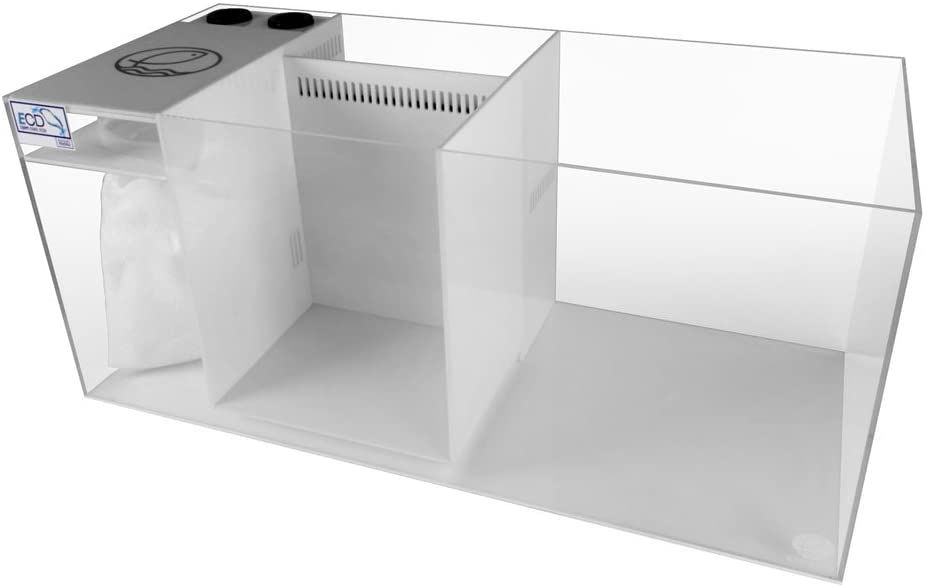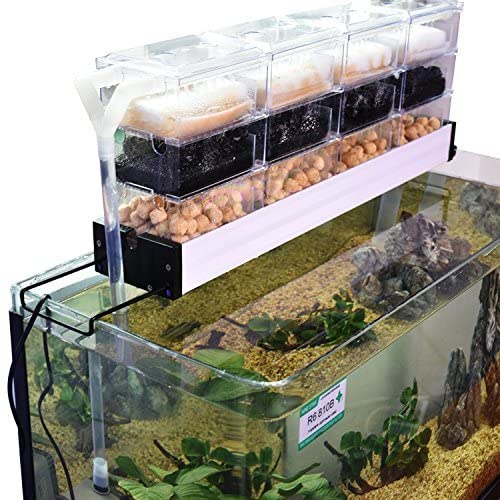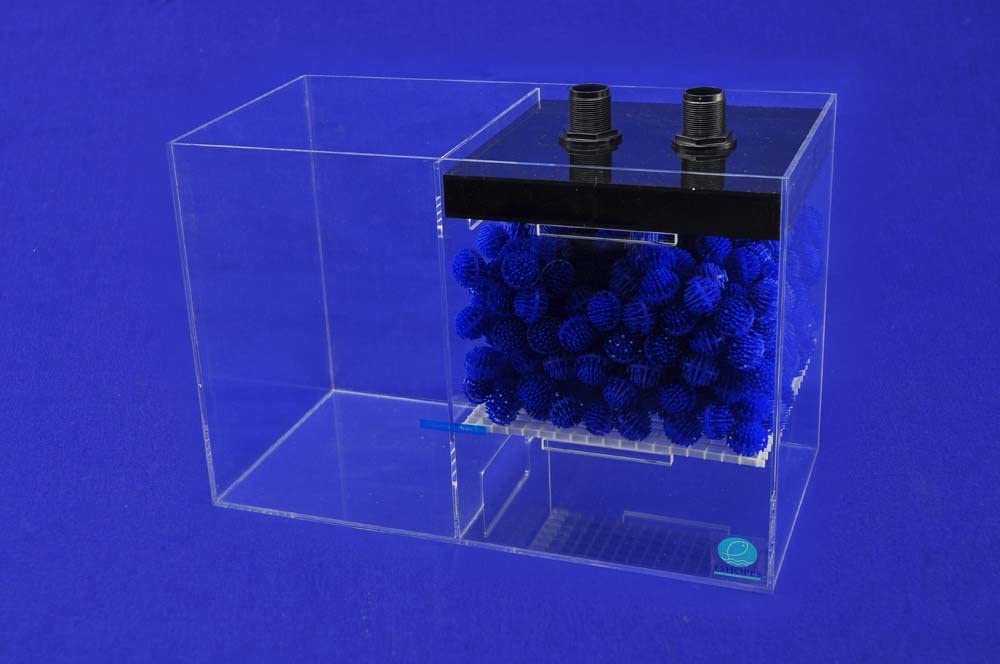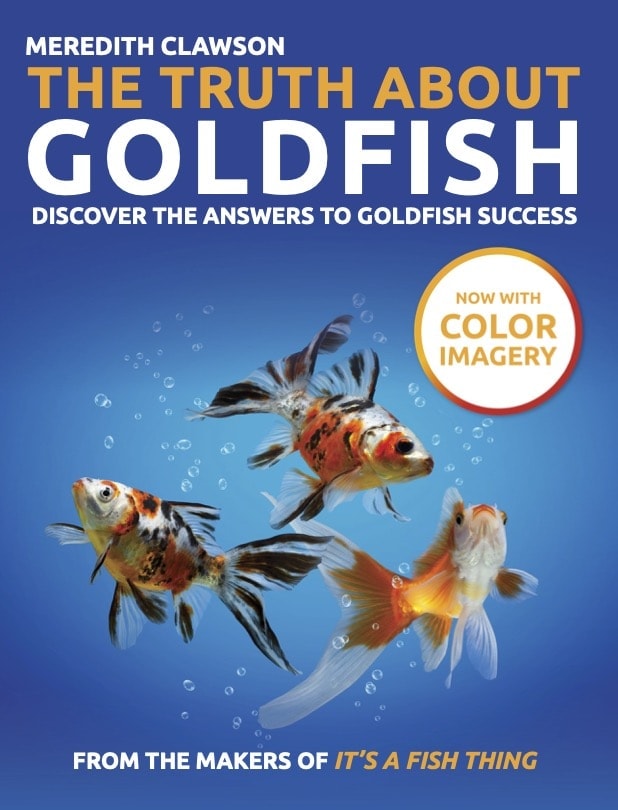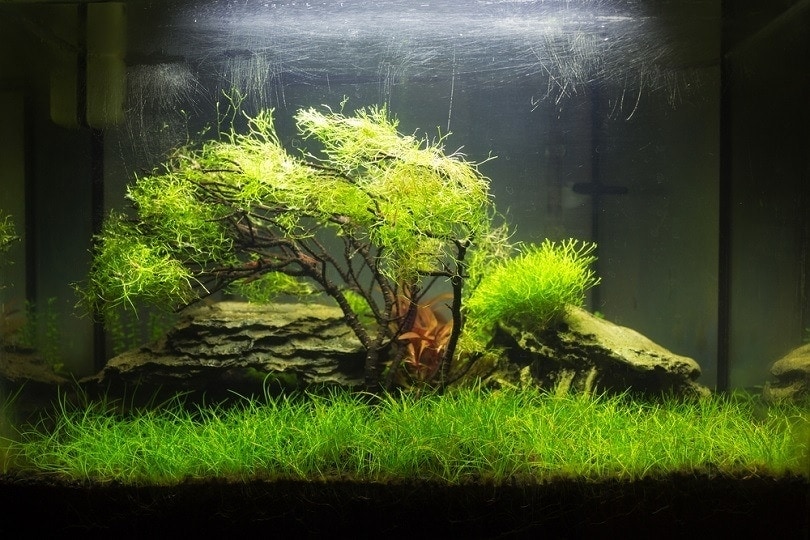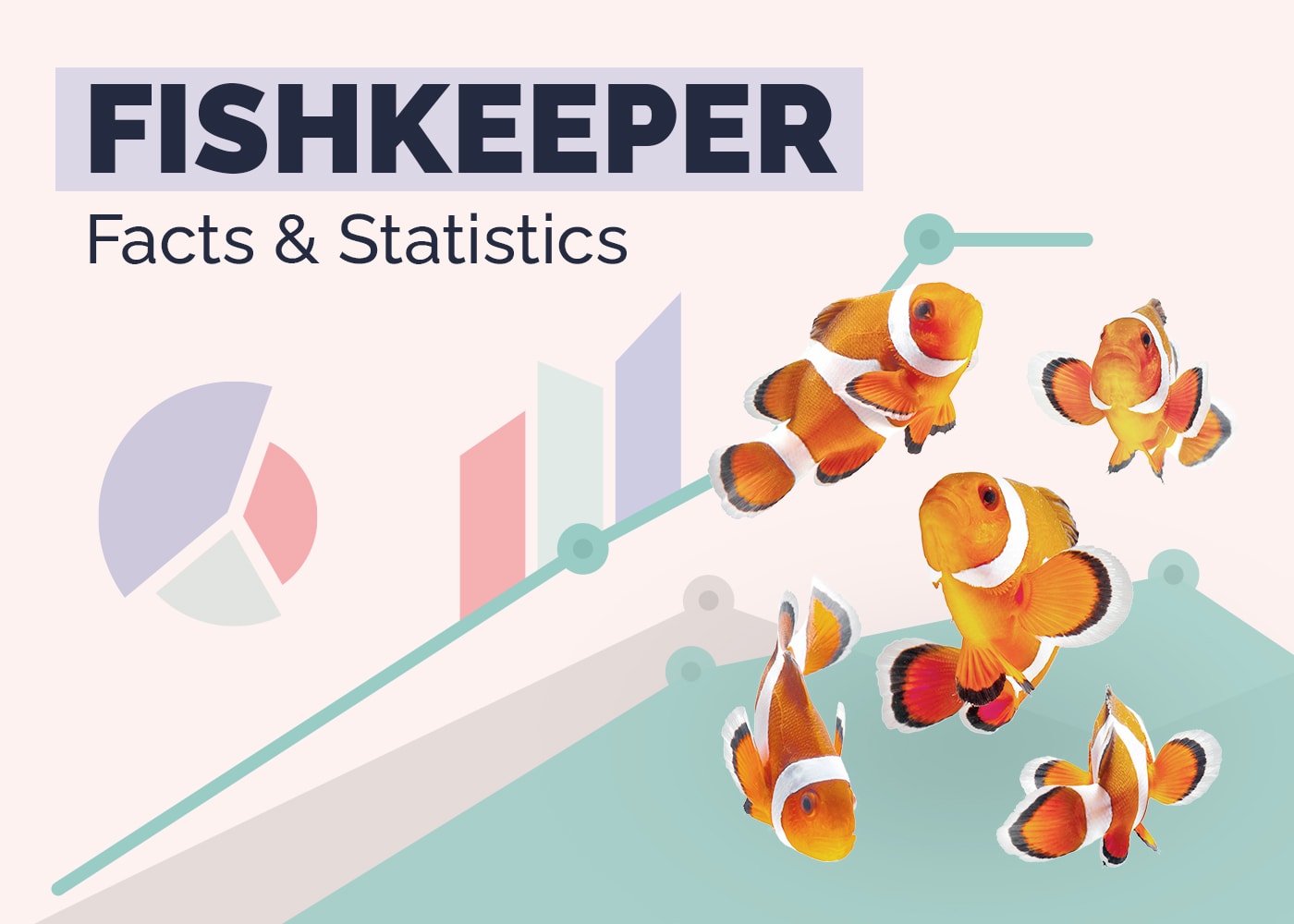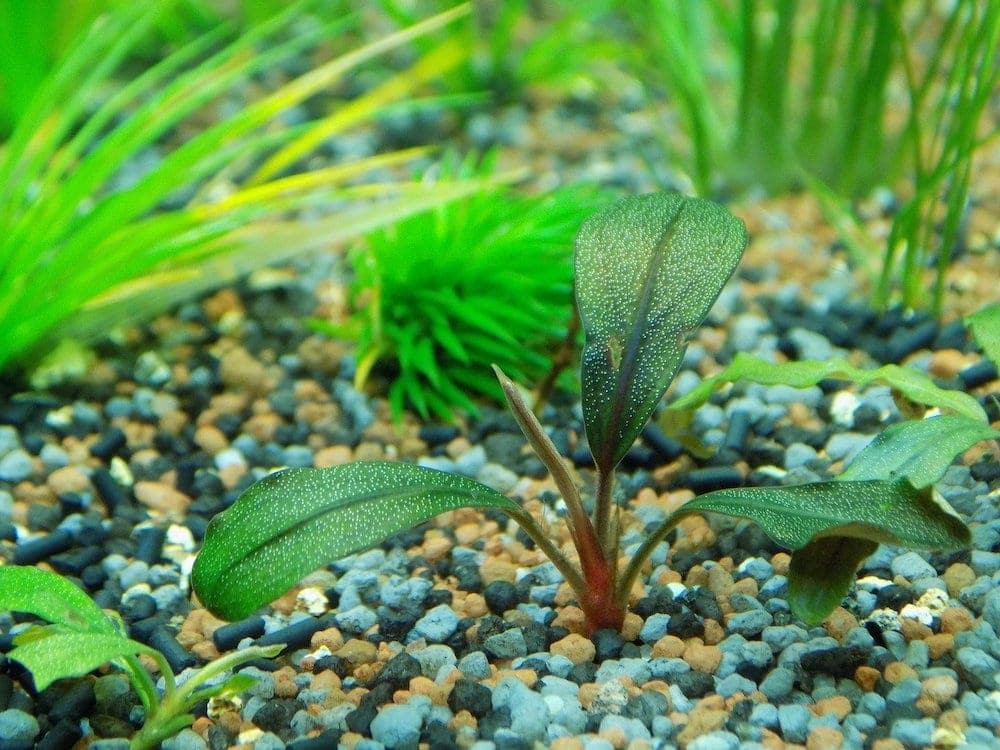5 Benefits of Wet/Dry Filter for Your Aquarium & How They Work

Updated on
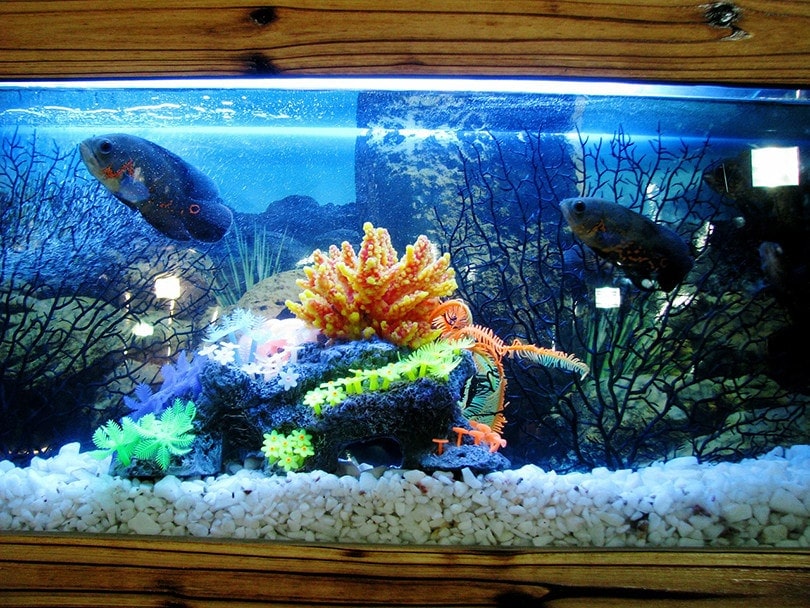
You may have not heard of this kind of filter before. That’s okay, you’re going to get in on the secret now. A wet/dry filter (also called a trickle “filter” “sump” or “shower filter”) is amazing for your fish…and for you.
Look: 80% of aquarium owners will QUIT after 2 years. Why? They don’t have the time or motivation to be putting in hours of tank maintenance every month. But with the right kind of setup, you can make fishkeeping way less work for yourself—spending more time on things you enjoy doing instead of hauling buckets.
Are you excited yet?!
The 2 Main Styles of Wet/Dry Filter Systems
1. Filter Below the Tank (Sump)
The first (and the most popular) style is that of a tank situated underneath the aquarium. Water is drawn into the filter below from the tank, many times using a special overflow box (which prevents you from having to drill a hole in the wall of your tank).
Next, water enters into the overflow box and is passed through a large tube down to the sump tank, where it passes through one or more baffles that section off different areas of the filter. The sump tank is usually around 1/3 the size (in gallons) of the main tank.
Sump tanks can hold a variety of media to filter the aquarium, such as sponges, ceramic biorings, bioballs, and pouches containing chemical filtration such as charcoal. For saltwater/marine setups, there can be provision to put a protein skimmer or media reactor.
Once the water has been purified in the sump tank, it is returned to the main tank by a pump located in the last chamber of the sump.
Where to Buy / Size Guide
| Tanks 10-75 Gallons | Tanks 75-125 Gallons | Tanks 125-225 Gallons | Tanks 225-300 Gallons | |
|---|---|---|---|---|
| Sump Tank |  |
 |
 |
 |
| Dimensions | 18″ x 10″ x 16″ | 24″ x 12″ x 16″ | 30″ x 12″ x 16″ | 36″ x 14″ x 16″ |
| Overflow box |  |
 |
 |
 |
| Return Pump |  |
 |
 |
 |
| Micron bag | 4″ | 7″ | 2 x Rectangle | 2 x Rectangle |
Micron bags (aka filter socks) are used to trap solid waste and are cleaned out (usually weekly for freshwater, more for saltwater) or replaced as needed. They are useful for both freshwater and saltwater applications.
For pumps, aiming for roughly a 10X turnover rate seems to provide good oxygenation and speeds up the nitrogen cycle. This means if you have a 100-gallon tank, you would want a pump that turns over 1,000 gallons per hour.
Some sumps are specifically created to be a refugium only—such as this one, rated for up to 125 gallons—and are sometimes used just to increase water volume. These are usually less expensive.
- Useful for freshwater or saltwater
- You can also use a below-tank sump to create a saltwater or freshwater refugium in your wet dry filter
- This can allow you to house delicate fish species that wouldn’t survive in the main system
- Helps grow plants that can assist in nitrate reduction and GREATLY reduce maintenance on your tank
- Adds more gallons to your overall system, making for a more stable environment
- Want to hide your heater? Stow it away in your sump too!
- Can greatly reduce maintenance and need for water changes due to powerful biological filtration
- Can be almost completely concealed from the main tank
- Requires planning for the event of a power outage to prevent overflow
- Aesthetically may be best to be set up in a cabinet rather than a frame stand
- Unless you get an overflow box, you have to drill the tank
2. Filter Above the Tank (Trickle Filter)
This is another option—though less common, it has its own advantages. Water is pumped from a submersible pump in the aquarium up to the filter box, which is loaded with filter media. The water rains over the media and back into the tank, making a trickling sound.
A large-scale version of these is sometimes used for applications in koi ponds. I’ve learned it is a good idea to keep a sponge pre-filter on the intake of the pump to reduce the time between cleanings.
- No need to plan for a power outage to prevent flooding
- Very powerful biological filtration capabilities
- Highly oxygenated returning water
- Can have a very low water current for delicate fish
- Can grow aerial plants
- Not as useful for marine applications
- It can be an eyesore/distraction from the main tank
- Can be pretty loud as the water rains down
- Can’t house smaller aquatic life like a refugium in a sump
- You are also required to put a pump and tubing in the main tank
- No storage for heaters
- Spotty nitrate removal results. Sometimes it happens in some setups, sometimes it doesn’t.
- Does not add significant gallonage to the system like a sump does
How to Set Up a Wet/Dry Trickle Filter System
Setting up a trickle filter is like making a sandwich.
There are a lot whole lot of good ways to do it. I’ll share my preferred method below, which is super simple. In the highest level of boxes, I first put down a single layer of nitrate-reducing filter media. Then on top of that, I put a thin clarifying pad to help with straining out particles.
Only some specific kinds of filter media allow for nitrate reduction…. But lucky for you, they aren’t too hard to find. Those plastic bio balls won’t ever clog up, but they often turn into nitrate-producing (NOT reducing) factories – so I don’t recommend them.
So I prefer something else: Seachem Matrix or FilterPlus media pieces actually help eliminate nitrates. Another plus is that they are lightweight. You can use a ton of it and it doesn’t add much weight at all.
On the surface, you have a home for aerobic bacteria that convert ammonia into nitrate.
Then deep in the core, you have a dark, low water flow and low oxygen area perfect for the good anaerobic bacteria that break down nitrates. I try to give the pieces a little space in between so that debris doesn’t get trapped there – that’s why I use the clarifying pad. This pad is optional but can make collecting waste easier.
Now: There isn’t any point in collecting debris if you are just going to leave it in there to pollute the water. That’s why I advise rinsing the pads weekly if you choose to use them. Then I literally just put more layers of filter media in the lower levels of the boxes.
That’s it and that’s all I do. Easy as pie, right?
Don’t forget: You’ll want to put a pre-filter on your pump.
If you're a new or even experienced goldfish owner who is having issues understanding the intricacies of water filtration, or just wants a bit more detailed information on it, we recommend that you check out our best-selling book, The Truth About Goldfish. It covers everything about creating the most ideal tank setup and more!
Other Things You Can Put In Your Wet/Dry Trickle Filter
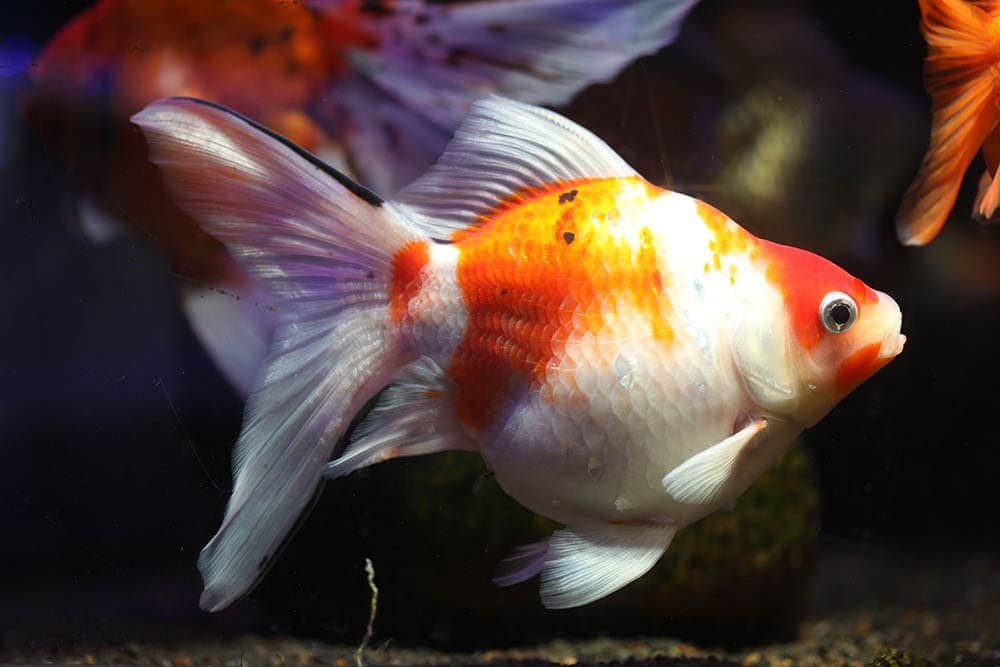
If you have trouble with your pH you can put alkalinity/acidity adjusting products there too. For goldfish, adding crushed coral or oyster shells is a good idea as goldfish prefer harder water. If chemical filtration is desired, putting the carbon at the bottom is a good way to go.
You can use sacks of carbon sticks, or a carbon-infused pad. However, I’m wary of using carbon-based on its proven direct link to disease in some fish. Instead, many aquarists are having success using Seachem Purigen to help reduce organic matter and keep the water crystal clear.
Unlike carbon, Purigen actually changes colors so you know when it’s exhausted. A large sponge distributed through the middleboxes can help to trap solids and provides additional surfaces for bacteria to grow on.
Personally, I don’t like these because they are difficult to clean. This will need to be swished out frequently in a bucket of tank water to prevent it from clogging up and getting nasty.
Benefits of Wet/Dry Filters
1. More efficient than conventional filters
We’re talking anywhere from 2 to 10 times more efficient. Why? When the filter media is exposed to air and water at the same time instead of submerged, the bacteria does a WAY BETTER JOB converting ammonia to nitrate.
More efficient conversion = a healthier tank. The water that returns to the tank is also extremely well-oxygenated.
Because they are so efficient, when paired with the right kind of filter media, many people actually are able to get away with stocking their aquariums more heavily than normal without water quality problems.
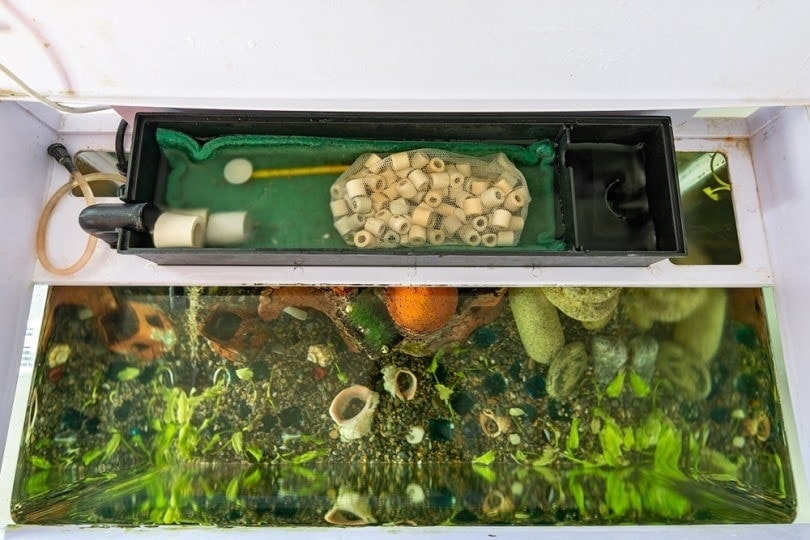
2. Lower current
The bacteria in wet/dry filters work off of oxygen in the air, not the water (unlike with HOB filters). That means you don’t need those high water turnover rates that stress out fish with more exaggerated fins and rounder bodies.
Low turnover rates mean less current. This is perfect for slower-moving fish such as goldfish.
3. Cut down Your Tank Maintenance
Do you ever get tired of doing so many water changes? It might seem too good to be true to be doing a water change maybe… once a month rather than once a week. Well, now you can.
Sometimes when using this kind of specialized filter media, such a filtration setup has the incredible ability to actually reduce nitrates – a feat no hang-on-back-filter has ever been able to accomplish! As you may know, nitrates are one of the biggest reasons frequent water changes are necessary for a tank.
Yes, the fish will probably require some minimal water changes, but lower nitrates stimulate spawning and growth. The monthly water change can consist of vacuuming debris that accumulates on the bottom of the tank.
4. You Can Grow Plants in Them

This is crazy: The round filter media pieces (more on those later) that make a perfect home for bacteria in this setup are the #1 preferred media for use in something called…
If you aren’t familiar with the word, it basically means using fish waste to feed plants by pumping water to their roots. Many kinds of plants can grow in the top level of a trickle filter, adding more filtration and aesthetic value. What, even more filtration? You bet.
Garden vegetables are extremely popular in aquaponic systems because they grow fantastic on fish waste, helping to break it down and use it for nutrients. I mean, you are literally using your goldfish to make your own food!
It’s REVOLUTIONARY. Well, maybe not. The concept has been around a long time, we’ve only recently used our technology to do it. And if you are most concerned with how your tank looks overall, you can even grow trailing plants like devil’s ivy (aka Pothos) over the side to conceal the setup.
You’ll want to use the filter media in the top level and provide a light source such as this grow light. This kind of setup is ideal for them because their roots are constantly receiving water while there is still ample oxygen around their roots, preventing them from “drowning.”
5. Better than Sponge Filters
Sponge filters for goldfish have become pretty popular, and I’ve advocated using them myself. In fact, with regular cleaning and large frequent water changes they can be a good thing. Here are the drawbacks of sponge filters:
Because the mechanical filtration is not separated from the biological filtration (it all occurs on the same surface), the sponge gets covered in debris that chokes out the beneficial bacteria and stops them from working well.
The solution? Frequent cleaning. They also can’t help in reducing nitrates. So you have to do water changes regularly to keep those down and keep the debris out. Especially for heavier waste-producing fish such as goldfish, they may not be a very powerful solution.
Just some things I’ve found after my years of use with them. You can still use a sponge filter in addition to a wet/dry filter for added aeration/water clarifying if you keep it clean, but it isn’t always necessary. Some people complain about wet/dry filters being expensive….
But in my book, it’s worth every penny when you realize how much it saves you on the water bill (not to mention your time!).
How Does A Wet Dry Filter Work?
We do not want to go too deep into detail here, but enough to let you know exactly what is going on with these wet-dry AKA trickle filters. We are going to keep things nice and simple and go through this in a step-by-step manner.
Trickle filters work using an overflow. This is some kind of mechanism which allows water to freely overflow from the tank into the wet dry filter once the water reaches a certain level. Once the water flows out of the fish tank it is collected by a drainpipe, also called a channel. This drainpipe then sends the water to the top of the wet dry filtration tower.
After the water enters the top of the tower, it enters some kind of horizontal spray bar or other horizontal distribution method. The water will then trickle down, which is why these filters are also called trickle filters. Most are either stationary spray bars or spinning spray bars. This mechanism can also take the form of a standard distribution plate. The job of the spray bar, spinner, or distribution plate is to evenly distribute the water across the top of the tower.
The water then proceeds to trickle over a variety of filter media (we have covered a detailed guide on filter media that you can find in this article). Now, we did mention how these wet dry filters are best for biological filtration. This is because the tower contains a fairly large open space with bio-balls that are suspended above the water. These bio balls engage in biological filtration by making the water pass beneficial bacteria. These bacteria clean the water as the water passes the bio balls, while also infusing your tank water with beneficial bacteria, the point of which is to kill ammonia, nitrites, and nitrates.
Yes, there are some wet dry filters out there that allow for mechanical and/or chemical filtration, but that is not their main purpose. Some wet dry filters come with mechanical filtration, usually in the form of a sponge and is generally located above the bio balls. However, when it comes to chemical filtration, few wet dry filters have it, with only the most expensive ones having the option to insert chemical filtration media.
After the water flows through all of the media, it flows into a sump, which is a fancy word for a collection tank. From there the clean water is then pumped back into the aquarium.
Why Is It Called A Wet Dry Filter?
Something to understand here is that wet dry filters are actually a specific type of trickle filters. Trickle filters are aptly named because the water trickles down over the bio balls. Now, wet dry filters are trickle filters that also have some kind of mechanical or chemical filtration.
They are called wet dry because the bio balls are suspended in the air, or in other words they are dry, while the mechanical or chemical filtration media is usually submerged in the water, or in other words, are wet.
Some Things To Know About Wet Dry Filters
- These filters are some of the best biological filtration units that you can get, but they are not ideal for good mechanical or biological filtration. Only the biggest and most expensive wet dry filters will allow for decent mechanical and/or biological filtration.
- Wet dry filters generally require very little maintenance, but this is because they usually don’t have too much in terms of mechanical and biological filtration. At any rate, all you will need to do is cleaning the tubing on occasion and give the bio balls a good rinse.
- It is a good idea to use a good mechanical and chemical filtration unit in conjunction with a wet dry filter.
- Most wet dry filters allow for the addition of a heater, protein skimmer, and/or UV sterilizer (more on those here). This is especially true for the bigger models.
- Wet dry filters are usually only ideal for larger aquariums of 60 gallons and up. They take up a lot of space and have a high flow rate, making them not too ideal for smaller tanks and slower swimming fish. However, there have recently been some wet dry filters released for smaller aquariums, but they tend to be fairly expensive.
- You will need to add more water to your aquarium on a regular basis because wet dry filters tend to have a fairly high rate of water evaporation.
What do You Think?
Have you ever tried using this system for your aquarium, and if so what were your results?
Are you potentially considering switching to this kind of filtration?
I look forward to reading your feedback in the comments below.
- Related Read: Saltwater vs Freshwater Aquarium: Pros, Cons & FAQs
Featured Image Credit: PDPics, Pixabay

